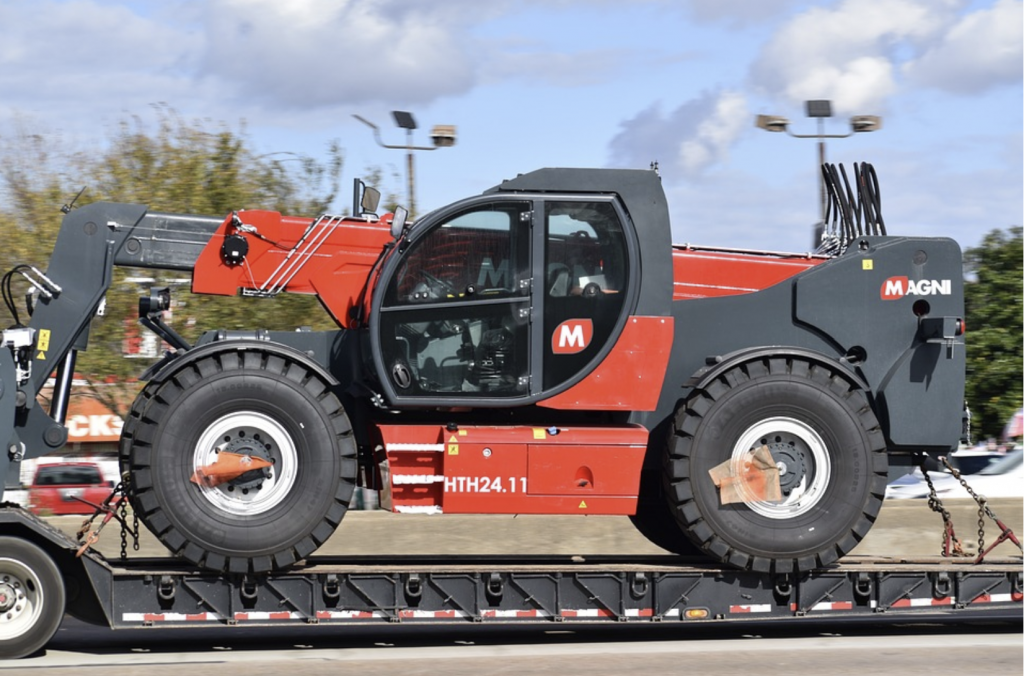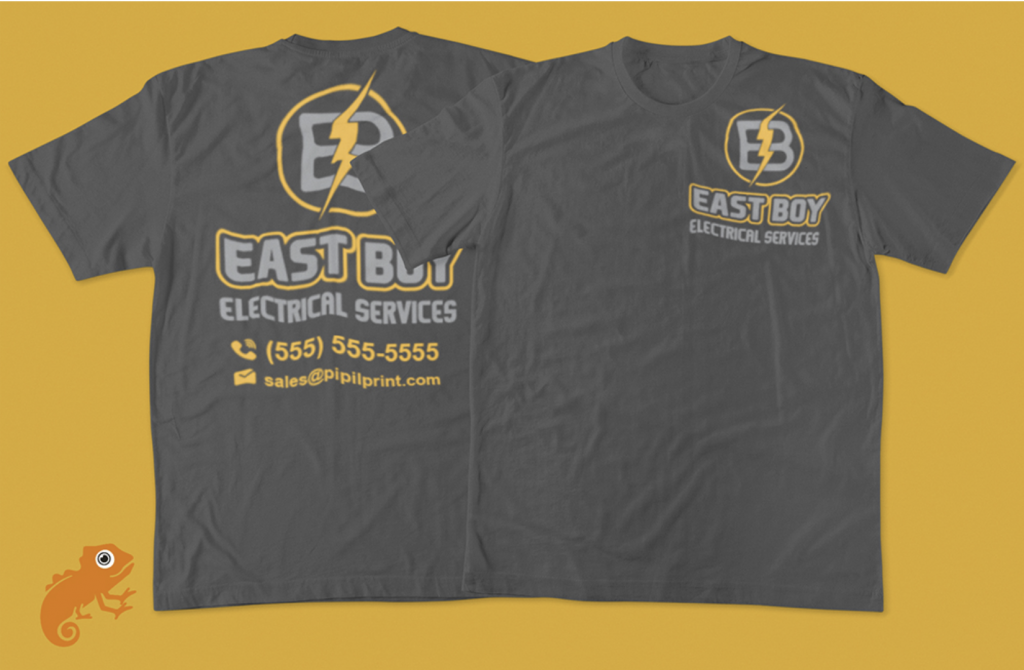Business
Who Will Save The Planet: The People Or Big Business?

Are you worried about climate change and the general state of the planet? If you read our previous article on the subject, you certainly will be and if not, then perhaps it’s time you caught up. The shorthand version is that the world is slowly dying. American talk show host and political comedian, Bill Maher, recently questioned why innovators like Elon Musk are so fascinated by the idea of living on Mars. Instead, he asserted, we should be focusing on saving this planet and correcting the damage done to it. Scientists are constantly trying to warn us that we need to do more to save the planet, but who are they talking about here?
The question we want to answer today: who has the best hope of saving the world and fixing the environment? Is it big business or the individual homeowners? In other words, should we look to the ant or the grasshopper? As the old fable goes, ants may be small but in large numbers they might be capable of far more than the larger, strong Grasshopper. To answer this question we first need to look at the statistics.
The Maths Behind The Melt Down
Here’s an interesting statistic for you to mull over.One child per family, according to experts is the equivalent of 58.6 tonnes of CO2 carbon emissions annually. That’s right, just by having kids and growing your family you are causing the destruction of the world. Try not to take that too personally because actually everyone is guilty.
However, before you get too distressed about this, let’s shine a light on another stat. 100 companies in the world are causing 71 percent of the global emissions that are currently destroying the environment. Essentially, this sends the message that we shouldn’t be trying to change the minds and lifestyles of the individuals but rather the businesses that are slowly killing the planet.
Of course, it is worth considering that while that might seem like there’s just a few bad eggs we are in the age of the massive conglomerates where monopolies are common. Just this month we learned Disney was attempting to buy up Rupert Murdoch’s pride and joy while Warner Bros. continued their efforts to merge with AT&T. What does this tell us? Is it really that surprising that – in comparative terms – a few companies are causing most of the pollution. Absolutely not, but that doesn’t leave the random individual completely blameless. Indeed, it’s fair to say that most people these days own a car or two. A typical vehicle will create over 4 tonnes of carbon emissions per year. Imagine how much damage you’re doing by driving alone.
The Businesses Must Act
One train of thought here then is that it is the businesses that must make changes for us to be able to see the light at the end of the tunnel. Believe it or not, that is starting to happen, at least in some areas of the world. In Denmark for instance, the government has set high stands for companies and the level of carbon emissions they can product. Infact, there is a heavy focus here on renewable energy which actually, all businesses should be looking towards now as a solution.
As well as this, businesses are in the perfect position to introduce innovative technology and processes that could make everything more efficient. Ultimately, this could start at the manufacturing level and we can take jet engines as an example here. So, during the manufacturing of turbine engines, producers now have the possibility of using Laser Light technologies to drill tiny holes into the engine, thus allowing it to cool more effectively. With this feature, the engine uses less energy and is a lot more efficient. For that to happen though, the producer has to use that method. The company creating the planes has to buy from that producer. But, if all this does occur then ultimately it impacts various different processes in the world. Flying from New York to London is suddenly a lot more eco friendly. So, perhaps the phrase should be ‘it starts at business’ rather than it starts at home.
After all, it is the businesses that are going to have to change to ensure that the impact of climate change and other environmental factors are reversed. One could even argue that if every business began to take a hard stance on correcting the impact that their model is having on the environment the issue would be resolved overnight. But, let’s take a closer look at the individual.
Power Of The Public
There are a few reasons why ultimately it is the public that has the power to change the impact we are currently having on the environment. First, of all, there’s that ant, grasshopper fable. There are a lot more people in the world than there are businesses. If everyone changed their energy usage the issues with carbon emissions wouldn’t disappear but they would be significantly reduced.
The public also have the power of the buyer. They can decide and determine who they want to buy from. If the public started turning their backs on businesses that continued to pollute they would have no choice but to act and to change their ways.
As well as this, we have now reached the point where small gestures won’t be enough. As the world population continues to grow, it’s clear that the biggest threat to environment is not carbon emissions but people. Governments need to act swiftly and start taking appropriate measures that may seem severe like limits on the number of children that people can have. While this might seem drastic we need drastic actions now, if the report by 15000 scientists is to be believed.
Perhaps then this is a trick question. The power to save us isn’t in the hands of the people or the corporations. The power to save us is in the hands of the governments around the world. But of course, governments work, at least they should, in the best interests of the people. As such, if you want to save the planet we really only have one question. How loud can you shout to make sure your voice is heard on this issue?
Business
The importance of telescopic handlers: innovation and efficiency in load handling
In the field of logistics, efficiency and safety are key aspects for the success of any project. Machines and tools must handle heavy loads and perform complex tasks with precision. In this sense, Magni TH telescopic handlers are the perfect option.

Telescopic handlers are lifting equipment that combine the capabilities of a crane and a forklift, featuring a telescopic arm that can extend and retract to reach considerable heights and access areas that may be difficult to reach manually. Thanks to this versatility, they become essential tools for a wide range of applications, indispensable in multiple sectors.
Today, the telescopic handler industry is constantly evolving, with technological innovations that enhance their functionality. One of the leading companies in this field is Magni TH, renowned for offering high-quality, efficient machinery with a focus on innovation and sustainability. This ensures that their telescopic handlers not only meet current demands but are also prepared for future challenges.
What does Magni TH offer?
Magni TH stands out in the market by offering a wide range of telescopic handlers that adapt to a long list of specific needs. Among their most notable models are fixed telescopic handlers (TH), rotating telescopic handlers (RTH), and heavy-duty telescopic handlers (HTH). They also offer aerial platforms, ranging from fixed models to articulated and rotating versions.
Furthermore, Magni TH machinery is widely recognised for its high-quality standards, due in large part to the selection of top-class raw materials. This attention to detail not only ensures compliance with market safety standards but exceeds them, guaranteeing that every machine is 100% reliable and durable.
Magni TH’s manufacturing process is another aspect that sets them apart. The company combines advanced industrial techniques with a craftsmanship approach, allowing for continuous innovation and enabling them to remain at the forefront of the market. This combined approach not only improves production efficiency but also allows for greater customisation.
In addition to their impressive product line, Magni TH is committed to providing proper advice and training to its customers. The company offers detailed descriptions of its products and services, ensuring that customers fully understand the capabilities and strengths of each machine model.
Magni TH also stands out for its focus on sustainability, reflected in the energy efficiency of each of their machines. This not only maximises user productivity but also ensures environmental responsibility at all times.
Innovation and safety
The use of innovative, high-quality telescopic handlers, like those manufactured by Magni TH, is essential for significantly improving operational efficiency across various sectors. These machines, thanks to their precision and speed in executing complex tasks, help reduce the time needed to complete projects, thereby increasing the overall productivity of companies.
On the other hand, safety is another key aspect when using high-quality telescopic handlers. These machines are equipped with advanced safety systems, such as stabilisers, enclosed cabins to protect operators, and load control systems, ensuring operations are carried out efficiently and reliably. Moreover, their ability to handle loads with precision and care is crucial for ensuring the integrity of products, significantly reducing the risk of damage during transport and handling. This is particularly important in sectors where product integrity is critical to maintaining high-quality standards.
At the same time, the use of innovative telescopic handlers can also enhance a company’s competitiveness. Investing in high-quality equipment allows them to provide services with greater efficiency and safety, helping them stand out in the market. Ultimately, investing in this type of telescopic handler can be considered a strategic decision that can have positive long-term impacts on the sustainability and growth of a company, as adopting advanced technologies demonstrates a commitment to excellence and proactivity, keeping companies at the forefront and allowing them to adapt easily to the many changes in the market.
Versatile Applications of Magni TH
Magni TH telescopic handlers are known for their versatility and ability to adapt to a wide range of applications. Unlike other companies that focus on specific sectors, Magni TH offers its products to any industry that requires load handling solutions. For example, in the agricultural sector, Magni TH telescopic handlers are key tools for tasks such as handling hay bales, transporting fertilisers, and loading livestock. Additionally, their ability to navigate uneven terrain and lift large volumes of material are essential advantages on farms and agricultural operations.
Likewise, the maritime sector benefits greatly from the versatility of Magni TH telescopic handlers. These machines are ideal for storage and cargo handling on vessels and ports, as well as for small routine maintenance operations.
In construction, Magni TH telescopic handlers are one of the most widely used tools, enabling the lifting and positioning of heavy materials such as bricks, cement, and beams. Regardless of the size of the construction project, their ability to operate on difficult terrain and reach high altitudes makes them ideal for any occasion, improving productivity and minimising the risk of accidents.
Finally, telescopic handlers are also widely useful in the industrial and mining sectors. In industry, these machines are employed for material handling in factories and warehouses, while in mining, their robustness, and load capacity make them a perfect option for working in extreme conditions.
Business
ServiceNow Development Consultancy: Business Process Automation as Disruptive Technology

In the age of AI and Machine Learning, automating business processes has become a must for any business that wants to remain competitive in their industry. Business process automation consists of setting up any process to be completed mostly by any existing technology with minimal manual input from human employees. For organizations seeking to optimize their workflows, engaging with a specialized ServiceNow implementation consultancy can be a game-changer, offering tailored solutions to streamline operations.
Examples include implementing an inventory management system so both you and your customers have access to accurate data on what products are available, sending out confirmation emails after purchase, having sales reports automatically generated through a CRM platform, social media posting schedules, and most email marketing tasks.
There are many reasons why business leaders have been turning to tech to improve their companies in recent years. The benefits of business process automation far outweigh the costs. These benefits range from increased efficiency, cost savings, scalability, and improved accuracy, to enhanced customer experience. Automating tasks in areas such as HR helps with employee onboarding and retention, and automation in all areas saves time when it comes to drafting reports and communicating with leads.
Marketing automation is responsible for a 14.5% boost in sales and a 12.2% decrease in marketing expenses (source: Nucleus Research). When employed in HR processes, business automation has shown that automation processes, when applied to onboarding, increase new hire retention by 16% (source: LinkedIn).
As is the case with any disruptive technology, business automation also poses risks, especially for more vulnerable sectors. It is estimated that by 2030, 47% of jobs in the United States are at risk of being displaced by automation (source: Science Direct). In the United States, workers aged 16 to 24 are the most exposed to the risk of automation, as 49% of these workers could have their jobs displaced by automation processes (Brookings).
Various government and company policies can be put in place to provide upskilling and reskilling for these workers to minimize the risk business process automation poses to some members of the workforce. However, it is clear that business process automation is here to stay.
Other concerns brought up by automation include data privacy and protection and copyright issues. Because automation involves storing confidential data in the cloud, businesses are concerned about security breaches by competitors or, worse, malicious users wishing to scam their current clients. Business leaders are paying more attention to cloud infrastructure services to minimize these risks.
Cloud infrastructure security can protect your business’ data through advanced encryption. Regular audits and compliance are automated but still supervised by human employees to ensure security has not been compromised. Data segmentation and isolation can also ensure your company’s data is not easy to access, even if there has been a breach.
On the other hand, some processes involving AI can end up infringing copyright laws in various industries. This can lead to large expenses in legal fees if AI is not used mindfully by departments, without mentioning the PR risks of your company accidentally employing someone else’s copyrighted content.
In conclusion, business process automation is a process including a wide array of existing technologies (AI, ML, etc.). Through business automation, business sectors start to delegate tasks to technological solutions.
As a result of automating tasks, there is proof of increased proficiency and accuracy, enhanced customer experience, and saved costs. However, there is also resistance from some sectors of society, as automation can result in job displacement for some existing members of the workforce.
To mitigate this, business leaders can emphasize the fact that they are automating processes while still making an effort to retain skilled workers. Upskilling and reskilling can help businesses retain employees whose jobs have become obsolete. Many governments are also expected to step up with a series of policies to protect the interests of these workers.
Business
Screen Printing Services: A Beginner’s Guide to Avoiding Mistakes and Maximizing Your Investment

Are you thinking about ordering custom t-shirts and don’t know where to start? Don’t worry! Screen printing is an incredibly popular and versatile technique that allows you to create durable, high-quality designs on a variety of products. In this guide, I’ll teach you the essentials to make your first screen printing experience a success.
What is Screen Printing?
First, let’s talk about the basics. Screen printing is a printing method that uses a mesh to transfer ink onto a surface, except in areas made impermeable to the ink by a stencil. This sounds a bit technical, but it’s actually quite simple: think of a large stencil and ink passing through it to form your design. It’s especially useful for printing on textiles, like t-shirts, but it can also be used on paper, wood, plastic, and more.
Benefits of Hire Screen Printing Services
Before getting into the details of how to place your order, let me tell you why screen printing is an excellent option:
- Durability: The ink used in screen printing is thick and adheres well to fabrics, making the designs last longer without fading.
- Versatility: You can print on almost any material. So, besides t-shirts, you can think of caps, tote bags, hoodies, and more.
- Cost-effectiveness: For large orders, screen printing is very cost-effective. The more units you print, the lower the cost per unit.
- Print quality: The colors are vibrant, and the details can be captured very well, especially in simple and bold designs.
Avoiding Common Mistakes
Now, let’s move on to the most common mistakes people make and how to avoid them:
1. Not Defining Your Design Clearly
It’s crucial to have a clear design before starting the process. Think about:
- Colors: Less is more. Screen printing works best with a limited number of colors.
- Details: Make sure the details are not too small. Fine elements can get lost in the print.
- Design size: Make sure the size of your design is appropriate for the final product.
Tip: Work with a graphic designer or use design software to ensure your design is ready to print.
2. Choosing the Wrong Type of Fabric
Not all fabrics are the same. Some fabrics are better for screen printing than others. For example, 100% cotton is ideal because the ink adheres well and the colors look more vibrant.
Tip: Ask your screen printing provider about the best fabric options for your design and purpose.
3. Not Requesting a Sample
Always, always, always ask for a sample before mass printing. This allows you to see how your design will look on the fabric and make adjustments if necessary.
Tip: Make sure the sample includes all the colors and details of the final design.
4. Not Planning the Production Time
Screen printing takes time. From preparing the design and stencils to printing and drying, there are several stages involved.
Tip: Plan ahead and consider production times, especially if you need the t-shirts for a specific event.
5. Not Considering the Total Budget
It’s easy to overlook additional costs like setup fees, shipping, and taxes. Make sure to get a complete quote before committing.
Tip: Ask your provider about all the costs involved and ensure there are no surprises.
Maximizing Your Investment
Now that you know what mistakes to avoid, here are some tips to get the most out of your screen printing investment:
1. Bulk Orders
The more you print, the lower the cost per unit. If you know you’ll need more t-shirts in the future, consider placing a larger order upfront.
2. Classic and Timeless Designs
Opt for designs that won’t go out of style quickly. This ensures you can use the t-shirts for a long time without them looking outdated.
3. Deals and Discounts
Many screen printing providers offer discounts for large orders or frequent customers. Don’t hesitate to ask about available promotions.
4. Take Care of Your Products
Once you have your t-shirts, make sure to take proper care of them. Wash printed t-shirts inside out and avoid using bleach to prolong the life of the design.
Choosing the Right Provider
Finally, choosing the right provider is crucial to the success of your project. Here are some aspects to consider:
- Experience and Reputation: Research and choose a provider with a good reputation and proven experience.
- Portfolio of Previous Work: Ask to see examples of previous work to ensure they can handle your design.
- Communication: A good provider should be willing to answer your questions and keep you informed throughout the process.
- Reviews and References: Read reviews and ask for references to ensure other customers have had good experiences.
In Summary
Screen printing is a fantastic technique for customizing t-shirts and other products, but like any process, there are tips and tricks to help you avoid issues and maximize your investment. From design preparation to choosing the right provider, every step is important. I hope this guide has given you a clear and practical view of how to start your screen printing journey without a hitch.
If you have any questions or need more information, don’t hesitate to contact us! We are here to help you bring your screen printing ideas to life. Good luck with your project!
-

 Blog Management12 months ago
Blog Management12 months agoWhat Is Your Website Content Missing? Three Things To Add ASAP
-

 Business9 months ago
Business9 months agoLearn English quickly and effectively with the Callan Method
-

 Sports10 months ago
Sports10 months agoA-Champs Reaction Training Lights: Your Path to Soccer Excellence
-
Travel10 months ago
Discovering Valencia and the Valencian Community: an unforgettable holiday experience
-

 Travel9 months ago
Travel9 months agoDiscover the finest tours across Morocco: an adventure oasis
-

 Sports9 months ago
Sports9 months agoBody Armor Plates – Essential Considerations for Selecting the Right Protection
-

 Travel7 months ago
Travel7 months agoImmerse Yourself in Nature: Explore Forest Bathing with a New Guidebook
-

 Europe7 months ago
Europe7 months agoBarcelona and Athens: cities that will leave an everlasting impression













